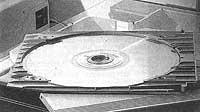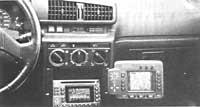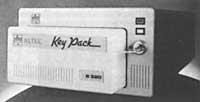CD-ROM: Small disc with giant capacity
1988/12/01 Sagarna, Andoni - Ingeniaria Iturria: Elhuyar aldizkaria
It has the recorded information definitely and in no case can it be deleted. Its capacity is 550 Mb. For those who do not know what this unit that is used in computer science means, let's say that it is enough space to have 150,000 printed pages, 15,000 online images or 2,000 color images, of good quality. New information compression techniques allow to include 128,000 images or a 60-minute video on a CD-ROM.
Since it cannot be deleted or rewritten, this support is appropriate for large files that do not require modification. The information is saved and read:

The information takes the form of very small holes on the surface of the discs. The head reading this information emits a laser beam to the surface of the disk. The beam that returns to the head after its reflection in a hole is dispersed and the reading system receives a very weak light. On the contrary, the reflected beam where there are no holes reaches the reading system directly and completely.
This principle allows distances greater than those used in magnetic discs on head and disc. This will make tears and damage appear more difficult on these discs. In addition, the discs are protected by a transparent layer, on which the reader does not take into account the possible dust rays and small traces.
On the same disk you can save simultaneously computer programs, data files, black and white images or color, cartoons, stereo sound, video, etc.
Once the original album is made and excluding the cost of copyright, 1,700 and 2,700 pesetas per disc. In any case, the information contained in these discs is cheaper than in any other support.
All information used for the preparation of a CD-ROM, such as computer files of different formats, digitized images, audio and video information, will be located in a common file structure. When formatting, the name, size and location of each file is used for marking, for later identification by the reading unit.
If you want to prepare a database with this information, there are still other operations:
- Indexing: List the positions of the data on the CD-ROM and save them to the disk itself for easy search.
- Understanding information: For information to take up less space. This operation is especially important for saving images. Bear in mind that they are images collected through a scanner. If the device resolution is 200 dpi (point/inch), for example, the information of a square inch will need 40,000 bits. However, this region can be totally white, at best, and you don't need to use so many bits to save that information.
- Distribute the information on the disk by regions to make the search faster.
- Protection of information where necessary.
There is no doubt that this album will change our customs a lot.

Gai honi buruzko eduki gehiago
Elhuyarrek garatutako teknologia





